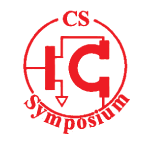Event Time:
Sunday, October 19, 2014 - 7:30am to 3:00pm
Most of the models used by IC designers in the Compound Semiconductor (CS) community are equivalent circuit based ones (ECM) because of their ease of implementation in circuit simulators. The first CS devices used for monolithic microwave ICs (MMICs) were GaAs FETs and HEMTs, with GaAs MHEMTs and InP HEMTs being used at millimeter-wave frequencies (>30GHz). In addition to ECM, physics based and behavioral models were also developed for these devices. During the last ten years, GaN technology has been positioning itself to displace GaAs as the main technology used for MMIC designs. For this reason, is it important to have a detailed understanding of the three major modeling methods as they apply to the specific nature of GaN HEMT technology.
During the 1980s and 1990s, when the initial analog/RF GaAs FET device technologies were being developed, various models were created to characterize their behavior in circuits. Some of these models included the Curtice Cubic, Statz-Raytheon, Angelov, the Agilent EEHEMT model, and the Root Model. Designers coming of age in this era needed to develop a familiarity with these models and learn under what circumstances they were valid. As GaN FETs emerged in the early 2000s, many of the original models and some new physics based ones were applied to capture their behavior. The questions that designers may now ask are how well these models work for GaN devices, what specific issues are device modelers encountering, and what modifications need to be made in order to generate representative models that are valid over a wide range of operating conditions.
The course opens with a discussion of equivalent circuit based models and how they apply to GaN HEMTs, with emphasis placed on the Angelov model. The second section covers GaN Physics based models and traces their evolution from solid state physics to their governing equations. The final part of the course covers compact and behavioral models, and examines the defining equations, and how to extraction and fit their parameters. Bringing together all three approaches in one course will allow attendees to have a thorough understanding of the current state of GaN modeling as well to weigh the merits and limitations of each one. The course will also compare GaAs with GaN as it applies to the evolution of device and modeling technology. This course is ideally suited to technologists and circuit designers with an interest in GaN and other CS technologies.
Short Course Schedule:
|
7:30 A.M. |
Introduction and Overview |
|
7:45 A.M. |
Equivalent Circuit Based Modeling Techniques for GaN HEMTs |
|
9:30 A.M. |
Coffee Break |
|
10:00 A.M. |
GaN Physics Based Device Modeling Techniques |
|
11:45 A.M. |
Lunch |
|
12:45 P.M. |
Compact and Behavioral Modeling Techniques for GaN Devices |
|
2:30 P.M. |
Coffee Break and Q&A |
|
3:00 P.M. |
Close of Short Course |
Registration includes Breakfast, Lunch, AM/PM Breaks and Course Notes on USB.








